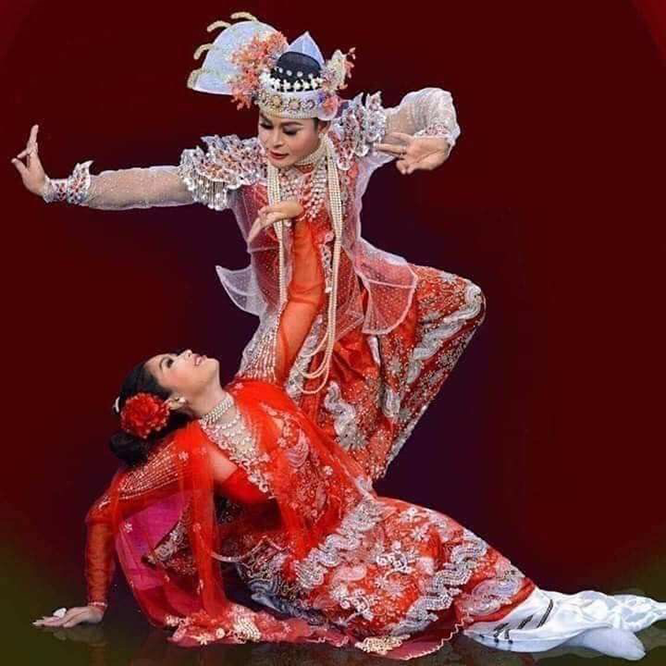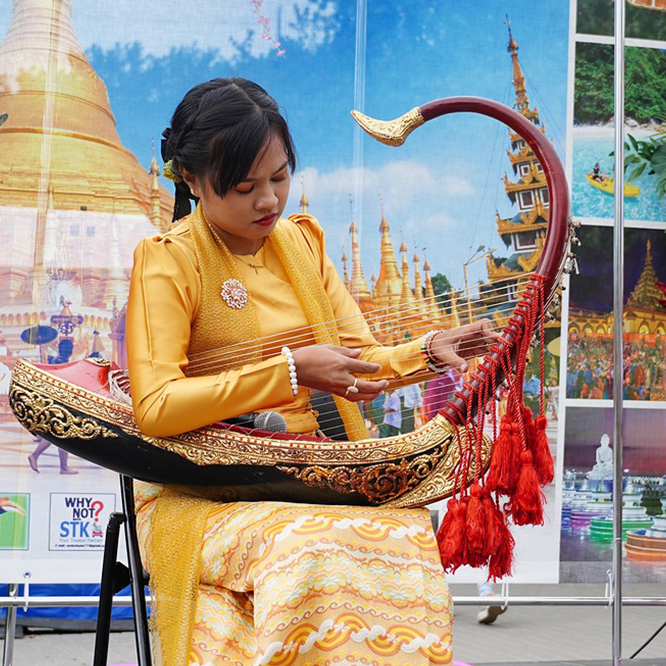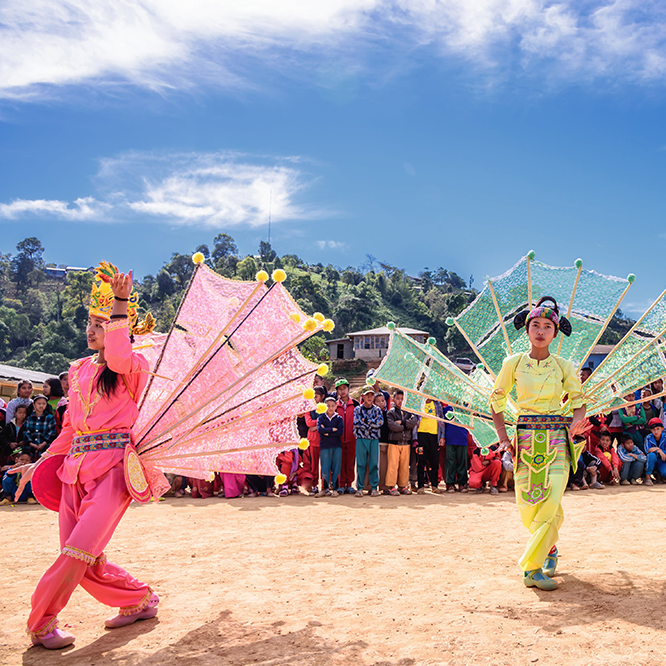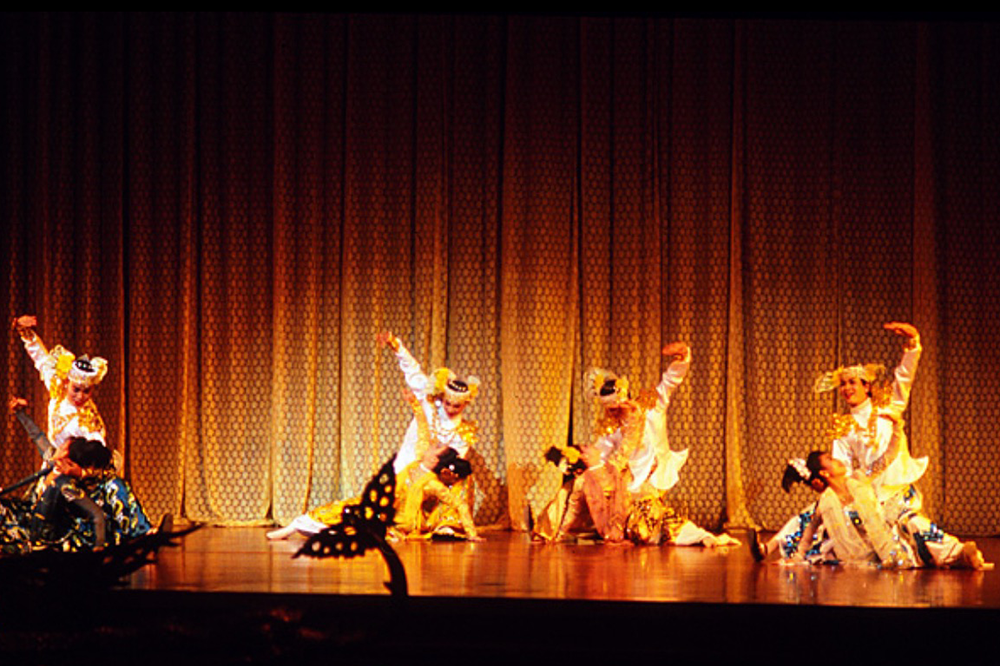Duet Dance (Mintha & Minthamee Dance)
- Home
- About Myanmar
- Cultural
- Dance & Marionet
- Duet Dance
The Duet Dance, also called Mintha-Minthamee Dance, is a traditional Burmese dance performed by a pair representing a prince (Mintha) and a princess (Minthamee). It is one of the most beloved and graceful forms of classical Myanmar dance.
Key Features
Characters
- Mintha – The noble young prince
- Minthamee – The gentle and graceful princess
- They symbolize youthful love, elegance, and courtly romance.
Music
- Accompanied by Mahāgīta songs (royal classical songs) played with traditional instruments like the Saung Gauk (harp), xylophone, and gongs.
- The rhythm is slow, graceful, and often poetic.
Dance Style
- Performed with slow, flowing movements and hand gestures (mudras).
- The dance reflects mutual admiration, love, or farewell between the couple.
- Eye contact, gentle expressions, and synchronized movements are essential.
- Costumes are elaborate:
- Mintha wears a silk longyi, jacket, and turban (gaung baung).
- Minthamee wears a traditional htamain, blouse (eingyi), and jewelry.



Symbolism
- Reflects courtly romance, respect, and grace rather than passion.
- Sometimes used to teach etiquette, as it demonstrates polite behavior between young men and women.
Cultural Importance
- Commonly performed during:
- Pagoda festivals
- National celebrations
- Cultural shows and school ceremonies
- Still taught in traditional dance academies and practiced to preserve Myanmar heritage.

